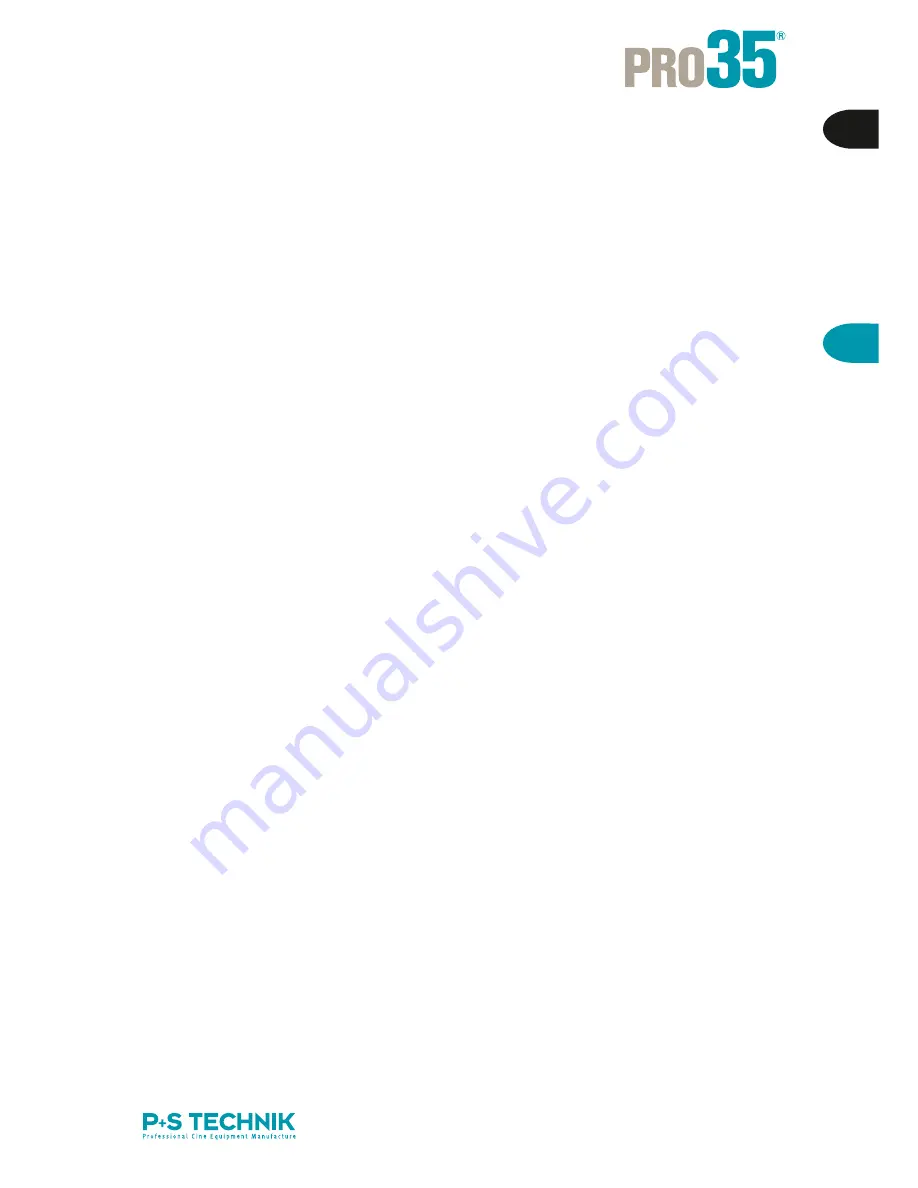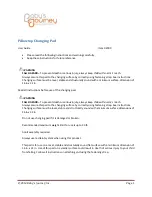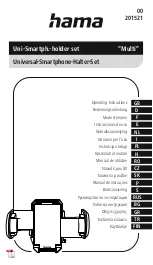
27
E
Setup
2
2.4 Adjusting the Camera:
Every lens has its own individual optical characteristics. This applies to all fi lm, photo and vid-
eo lenses. The modern electronic camera is preset ex factory for the established video lenses.
Strictly speaking for every used lens on the camera there should be a separate adjustment.
To make this possible – at least in a theoretical way – most of the manufacturers work with so
called lens fi les. Ideally all information regarding the lens (among others colour shading) can
be saved in these lens fi les. However in practice there is often worked with only one lens fi le
for several lenses, because the differences between the lenses/manufacturer are becoming
less obvious.
If the P+S Technik PRO35 Image Converter is used with a professional electronic camera, it
is recommended to create a separate lens fi le respectively an own setup for the colour
shading. Otherwise a vertical colour gradient can be the result; in this case the characteris-
tics of chosen lens fi le and of the PRO35 Image Converter are too different (incl. the used
lens).
2.4.1 Creation of lens
fi
les (colour shading):
The colour shading of electronic cameras should only be adjusted by qualifi ed service per-
sonnel. Your service partner can surely help you. If you are renting the Image Converter,
please ask the rental house for presets for the equipment combination. If you are in need of
support on the fi lm location, the D.I.T. (Digital Imaging Technician) can make relevant adjust-
ments.
Generally a lens fi le for each “kind” of lens is created.
For example a fi le for the PRO35 Image Converter with Cooke™ fi xed focal distance Type S4
lenses and a fi le for the PRO35 Image Converter with Zeiss™ fi xed focal distance Type UP
lenses.
Lens fi les can / should normally NOT be transferred from one camera to another and have
to be adjusted individually for each camera. Many camera manufacturers offer an automatic
colour shading alignment; also the creation of lens fi les is described in the camera manuals.
Exception:
If you are recording on a system based on raw data or if you want to use for example the
Filmstream™ process of the Thomson VIPER™ camera, there are often no more possibilities
of adjusting the shading in the cameras. In this case any adjustment of the shot pictures can
be made in the post production. There exist often appropriate tools for the adjustment. As
the case may be, it can be helpful to do some shots of white surfaces before the shooting, in
order to create masks for the adjustment in the postproduction.
















































